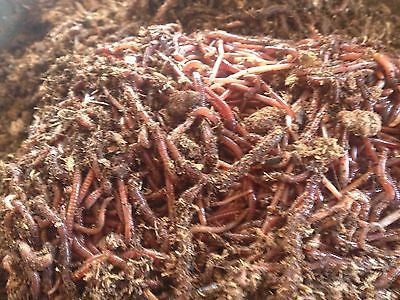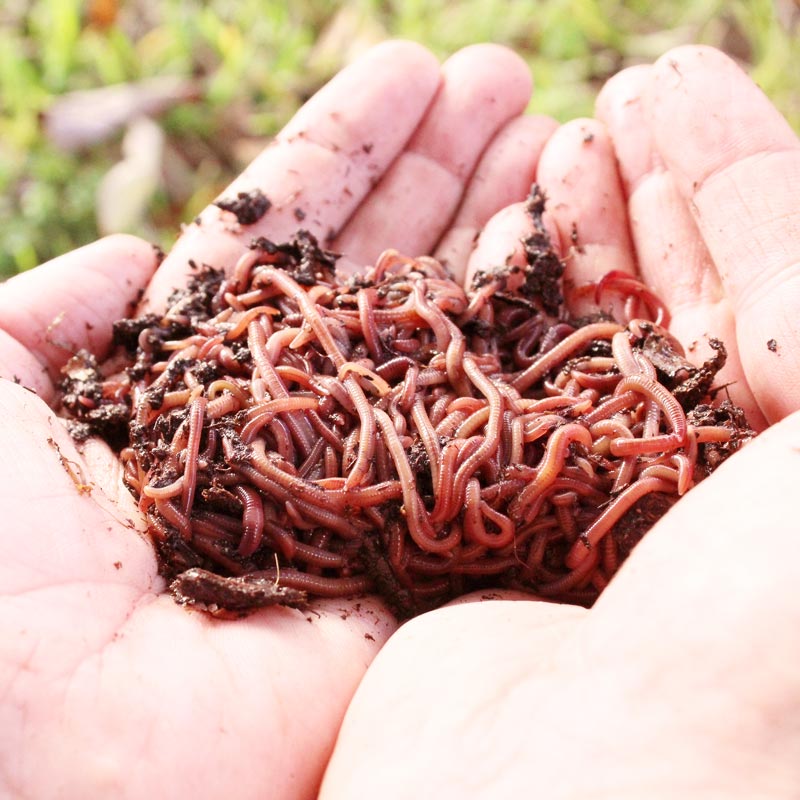Optimizing the Benefits of Red Wiggler Worms: A Comprehensive Handbook for Home Gardeners and Urban Farmers
In the realm of sustainable horticulture practices, red wiggler worms stand as unrecognized heroes, silently transforming natural waste into nutrient-rich castings that can function marvels for soil health and wellness. As home garden enthusiasts and urban farmers progressively seek environmentally pleasant and affordable ways to enhance their yards, the potential benefits of using the power of red wigglers can not be overstated. From minimizing kitchen area waste to growing much healthier plants, the utilization of these humble creatures uses a plethora of benefits. By discovering the intricacies of how to efficiently take care of and make the most of the benefits of red wiggler worms, individuals can unlock a riches of chances for boosting the sustainability and performance of their horticulture undertakings.
Recognizing Red Wiggler Worms
Red Wiggler worms, renowned for their reliable composting capacities, are a types of earthworms widely used in vermiculture techniques. These worms, scientifically understood as Eisenia fetida, grow in decaying natural product, making them ideal candidates for composting (Red Wiggler Worms). Red Wigglers are starved eaters, efficient in eating their own weight in organic waste daily. Their gastrointestinal procedure breaks down natural issue right into nutrient-rich spreadings, which are an important resource for enhancing dirt and promoting plant development.
One trick characteristic of Red Wiggler worms is their reproductive rate. These hermaphroditic animals have both male and women reproductive body organs, permitting them to reproduce rapidly under beneficial conditions. A mature Red Wiggler can produce multiple offspring in a short period, guaranteeing a stable population within a composting system.

Establishing a Worm Bin
When developing a worm container for vermiculture purposes, proper prep work and focus to detail are vital for developing a favorable atmosphere for Red Wiggler worms. Begin by selecting an appropriate container for your worm container. This can be a plastic or wood container with a cover to keep dampness degrees and protect the worms from light. Guarantee that the bin has drain openings near the bottom to stop waterlogging.

Place the worm container in a great, dark location far from direct sunshine and severe temperatures. Regularly check the wetness levels, adding water if the bedding really feels dry or half-cracked. Feed the worms a balanced diet regimen of fruit and vegetable scraps, staying clear of citrus fruits, onions, and spicy foods. By complying with these steps, you can establish up a flourishing worm container that will effectively refine organic waste right into nutrient-rich vermicompost for your garden.
Feeding and Keeping Worms
Guaranteeing a balanced and nutritious diet plan is crucial for the health and efficiency of Red Wiggler worms in a vermiculture system. It is essential to prevent feeding them citrus fruits, onions, garlic, milk products, meat, and oily foods as these can be dangerous to the worms or trigger undesirable smells in the container.
Proper dampness degrees are likewise vital for the well-being of Red Wiggler worms. By faithfully checking their diet, dampness, and environmental problems, home gardeners and urban farmers can maintain a healthy and effective Red Wiggler worm populace for composting objectives.
Harvesting Worm Spreadings
To efficiently remove nutrient-rich worm spreadings from the vermicompost, a systematic harvesting procedure is vital for optimizing the composting benefits. Red Wiggler Worms. The initial step in collecting worm castings is to motivate the worms to migrate to one side of the container. This can be achieved by positioning fresh food scraps on one side and leaving the other side undisturbed for a couple of days. Once most of worms have actually dodged with fresh food, the spreadings can be collected from the contrary side.
After the castings have actually read this article been collected, it is essential to divide any staying worms from the spreadings to stay clear of damaging them during storage or application. One efficient technique is to develop conical stacks of spreadings under brilliant light. Worms will instinctively move away from the light, enabling original site for very easy splitting up and elimination.
Lastly, the gathered worm spreadings need to be stored in an amazing, dark, and completely dry location to keep their top quality and performance as a nutrient-rich dirt modification. By following these steps, home gardeners and urban farmers can maximize the advantages of red wiggler worms in their vermicomposting systems.
Utilizing Worm Castings in Horticulture
The incorporation of nutrient-rich worm castings right into yard dirt can significantly boost plant development and total dirt health and wellness. Worm spreadings, likewise called vermicast, are a natural fertilizer produced by red wiggler worms as they break down raw material. These spreadings are rich in vital nutrients like nitrogen, phosphorus, potassium, and helpful microorganisms that promote plant growth and boost dirt framework.
When making use of worm spreadings in gardening, it is necessary to mix them thoroughly right into the dirt or use them as a leading dressing around plants. The slow-release nature of worm castings guarantees a stable supply of nutrients to plants in time, reducing the threat of nutrient leaching and advertising long-term soil fertility. Additionally, worm spreadings assist improve dirt aeration, water retention, and microbial task, producing a healthy setting for plant roots to flourish.

Verdict
Finally, the usage of red wiggler worms in home horticulture and urban farming can substantially profit dirt health and plant growth. By comprehending just how to establish up and maintain a worm bin, feed the worms correctly, and gather their nutrient-rich spreadings, garden enthusiasts can optimize the advantages of these earthworms. Incorporating worm castings useful site into gardening practices can improve dirt fertility and general plant performance. On the whole, red wiggler worms offer a sustainable and effective solution for improving garden and farm yields.
In the realm of sustainable gardening practices, red wiggler worms stand as unsung heroes, silently changing natural waste into nutrient-rich castings that can function marvels for dirt health and wellness.When establishing a worm bin for vermiculture objectives, correct prep work and interest to detail are essential for developing a helpful atmosphere for Red Wiggler worms. The very first action in collecting worm castings is to encourage the worms to migrate to one side of the container. Worm castings, also known as vermicast, are an all-natural fertilizer produced by red wiggler worms as they damage down organic matter. By recognizing exactly how to set up and maintain a worm container, feed the worms correctly, and harvest their nutrient-rich spreadings, gardeners can take full advantage of the benefits of these earthworms.
Comments on “Red Wiggler Worms - Boost Your Dirt Health Naturally”